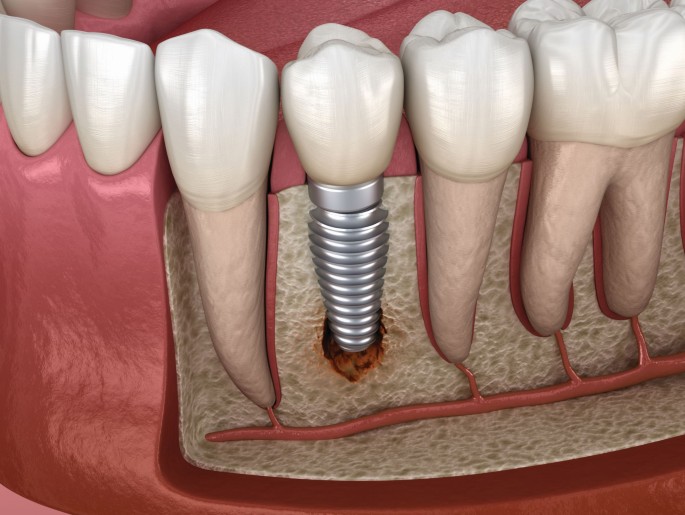Global peri-implantitis treatment market is flourishing due to an increasing focus on treating oral disorders, predominance of peri-implantitis, and growing use of advanced oral technologies.
BlueWeave Consulting, a leading strategic consulting and market research firm, in its recent study, expectsglobal peri-implantitis treatment marketsize to grow at a steady CAGR of 8.1% during the forecast period between 2023 and 2029. Major factors for the expansion of global peri-implantitis treatment market include increasing usage of dental implants for prosthetic rehabilitation, rise in the number of oral diseases, and increase in prevalence of peri-implantitis. Growing public awareness of oral hygiene has caused a rise in dental visits, which is expected to drive demand for peri-implantitis treatment. The growing geriatric population is expected to have a key influence in driving demand for peri-implantitis treatment. The elderly population is expected to have a key influence in driving rising demand for peri-implantitis treatment during the period in analysis. Several dental procedures, such as dental grafting, have emerged from technological advancements, and are projected to provide lucrative possibilities for industry players in the peri-implantitis market. Growing tobacco use and smoking rates lead to a variety of oral disorders, which are predicted to drive peri-implantitis treatment growth over the forecast period. However, lack of skilled dental specialists is anticipated to restrain the growth of global peri-implantitis treatment market.
Global Peri-Implantitis Treatment Market – Overview
Peri-implantitis is a site-specific infection illness that causes soft tissue inflammation and bone loss around an Osseo integrated implant. Osseo integrated dental implants are becoming an increasingly popular treatment option for replacing missing or lost teeth. When employed to support various types of dental prosthesis, dental implants have a good rate of long-term survival (more than 10 years). However, long-term success of dental implants is not the same as survival, as functioning implants and their restorations may be prone to mechanical and biological difficulties. Smoking, poor oral hygiene, a history of periodontitis, biomechanical overload (due to high pressure and micro-fractures causing loss of osseointegration around the neck of the implant), poor quality bone, incorrect implant position, implant overloading, and diabetes are all major risk factors for peri-implantitis. The growing demand for dental implants in numerous dental treatments has resulted in disease problems, such as peri-implant mucositis and peri-implantitis. These disorders have an impact on the tissues around the implant, causing bone loss, and impairing implant function. Peri-implantitis is categorized into four stages based upon the degree of bone loss that has occurred in the implanted teeth. The dentist determines the treatment aim based on the degree of osseous involvement, such as halting disease progression or regeneration.
Request for Sample Report @ https://www.blueweaveconsulting.com/report/peri-implantitis-treatment-market/report-sample
Impact of COVID-19 on Global Peri-Implantitis Treatment Market
COVID-19 had a detrimental effect on peri-implantitis treatment market due to various industries’ operations have either been temporarily halted or are operating with a reduced staff due to enforced lockdowns and imposed limits by respective regulating bodies. Consumers across the globe have deliberately sought to avoid being in close quarters with others, particularly in medical institutions, and this is a factor that has stymied the global peri-implantitis treatment market. However, increased investments by key industry players in the development of enhanced product designs for better patient care are expected to generate potential revenue growth prospects for the global peri-implantitis treatment market.
Global Peri-Implantitis Treatment Market – By Method Type
By method type, global peri-implantitis treatment market is bifurcated into Surgical and Non-Surgical segments. The surgical segment is expected to hold a higher market share. The segment is sub-divided into bone regeneration, open flap debridement, and implantoplasty. The surgical procedure is considered the gold standard for the treatment of peri-implantitis, as it allows thorough debridement and cleaning of the implant affected. The advancements of technology, an increase in the number of dental treatments, and an increase in the geriatric population with tooth loss are all contributing to the rise of peri-implantitis.
Competitive Landscape
Major players operating in global peri-implantitis treatment market include Pfizer Inc., Cadila Pharmaceuticals, R.N. Laboratories Pvt. Ltd., Basic Pharma Life Science Pvt. Ltd., Prachi Pharmaceuticals Private Limited., Healthy Life Pharma., Neoss Limited, Dawood and Tanner, Credentis AG, Jiangsu Yenssen Biotech Co., Ltd., Sincerus Pharmaceuticals Inc., Small Lab Co., Ltd., Raphas Co., Ltd., Institut Straumann AG, Preserve Your Teeth Dentistry, 3M Company, Botiss biomaterials GmbH, and Geistlich Pharma Inc. To further enhance their market share, these companies employ various strategies, including mergers and acquisitions, partnerships, joint ventures, license agreements, and new product launches.
The in-depth analysis of the report provides information about growth potential, upcoming trends, and statistics of Global Peri-Implantitis Treatment Market. It also highlights the factors driving forecasts of total market size. The report promises to provide recent technology trends in Global Peri-Implantitis Treatment Market and industry insights to help decision-makers make sound strategic decisions. Furthermore, the report also analyzes the growth drivers, challenges, and competitive dynamics of the market.
Contact Us:
BlueWeave Research Blog
Phone No: +1 866 658 6826
Email: info@blueweaveconsulting.com














